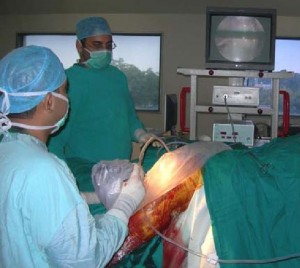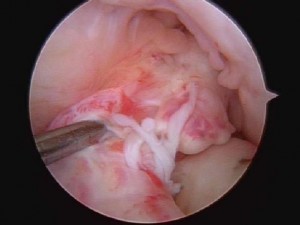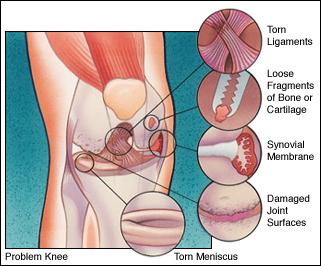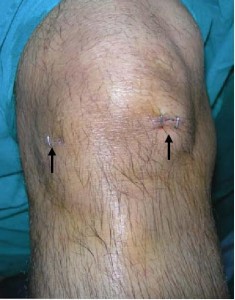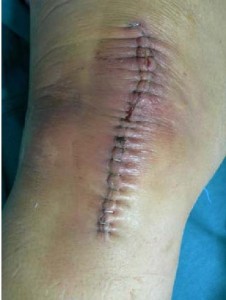Most of the arthroscopic procedures are performed on day care basis and the patients are usually ready to go home same evening. In cases where ligament reconstructions are performed the patient is discharged within two to three days.
Arthroscopy Guide
HOW IS ARTHROSCOPY PERFORMED ?
Arthroscopic surgery, although much easier in terms of recovery than open surgery, still requires the use of anaesthetics and the special equipment in a hospital operating room. After arrival, you will be evaluated by a member of the anesthesia team. Arthroscopy can be performed under local, regional, or general anesthesia. Local anesthesia numbs your knee, regional anesthesia numbs you below your waist, and general anesthesia puts you to sleep. The anesthesiologist will help you determine which would be the best for you.
The orthopaedic surgeon will make a few small incisions in your knee. A sterile solution will be used to fill the knee joint and rinse away any cloudy fluid, providing a clear view of your knee.
The surgeon will then insert the arthroscope (telescope) to properly diagnose your problem, using the TV image to guide the arthroscope. If surgical treatment is needed, the surgeon can use a variety of small surgical instruments (e.g., scissors, biters, motorized shavers, or lasers) through another small incision
- Outside View
- Inside View
After arthroscopic surgery, the small incisions will be covered with a dressing. You will be moved from the operating room to a recovery room. Many patients need little or no pain medications.
IN WHAT ALL CONDITIONS ARTHROSCOPY IS HELPFUL!
Common conditions which can be treated by knee arthroscopy include:-
- Removal or repair of torn meniscal cartilage
- Reconstruction of torn cruciate ligament
- Trimming of torn pieces of articular cartilage
- Removal of loose fragments of bone or cartilage
- Removal of inflamed synovial tissue.
WHO NEEDS ARTHROSCOPIC SURGERY ?
Your family physician can refer you to an orthopaedic surgeon to evaluate and determine whether you could benefit from arthroscopy.
Signs that you may be a candidate for this procedure include swelling, persistent pain, catching, giving-way, and loss of confidence in your knee. When other treatments such as the regular use of medications, knee supports, and physical therapy have provided minimal or no improvement, you may benefit from arthroscopy.
WHAT IS ARTHROSCOPY ?
Arthroscopy comes from a Greek word Artho & Scopien which literally mean to look into the joint. Arthroscopy is a procedure by which various joints in the body (Knee, Shoulder, Ankle, Hip & Wrist) can be inspected and treatment given by a small pencil shaped instrument called arthroscope (Telescope). This is a keyhole incision surgery where two single stitch incisions (Pic.1). are usually enough to treat any problem which would have normally required a large incision ( Pic.2). This has been made possible by technological advancement in Bio-engineering field. The small instruments (biters, shaver, probes, scissors etc.) also measuring 2 to 5 millimetres, are placed into the joint through separate incisions to remove torn cartilage, trim torn structures, or do other procedures.
- Pic.1 Small keyhole incision
- Pic.2 Large incision

